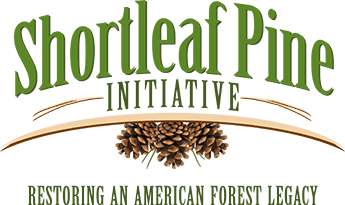|
Shortleaf research, newspaper articles, fact sheets, conference proceedings, literature reviews, and brochures.
Shortleaf Loblolly Pine A 9-year comparison of hardwood control treatments for enhancing natural regeneration and growth of loblolly-shortleaf pines in an uneven-aged stand
A 9-year comparison of hardwood control treatments for enhancing natural regeneration and growth of loblolly-shortleaf pines in an uneven-aged stand
Cain, M. D. (1998). A 9-year comparison of hardwood control treatments for enhancing natural regeneration and growth of loblolly-shortleaf pines in an uneven-agedstand. Proceedings, 51st annual meeting of the Southern Weed Science Society. Retrieved from https://www.srs.fs.usda.gov/pubs/ja/ja_cain023.pdf Cain, M. D. (1989). A simple competition assessment system associated with intensive competition control in natural loblolly-shortleaf pine seedling stands. Southern Journal of Applied Forestry, 13(1), 8-12. Retrieved from http://www.ingentaconnect.com/content/saf/sjaf/1989/00000013/00000001/art00005  A test of the exponential distribution for stand structure definition in uneven-aged loblolly-shortleaf pine stands
A test of the exponential distribution for stand structure definition in uneven-aged loblolly-shortleaf pine stands
Murphy, P. A., & Farrar, R. M. (1981). A test of the exponential distribution for stand structure definition in uneven-aged loblolly-shortleaf pine stands. Southern Forest Experiment Station, Research Paper SO-164. Retrieved from https://www.srs.fs.usda.gov/pubs/rp/rp_so164.pdf Chang, S. J., & Gadow, K. V. (2010). Application of the generalized Faustmann model to uneven-aged forest management. Journal of Forest Economics, 16(4), 313-325. Retrieved from http://www.sciencedirect.com/science/article/pii/S1104689910000140  Developing contemporary and historical live tree biomass estimates for old pine-hardwood stands of the Midsouth, USA
Developing contemporary and historical live tree biomass estimates for old pine-hardwood stands of the Midsouth, USA
Bragg, D. C. (2012). Developing contemporary and historical live tree biomass estimates for old pine-hardwood stands of the Midsouth, USA. Forest Ecology and Management, 281, 32-40. Retrieved from https://www.srs.fs.fed.us/pubs/ja/2012/ja_2012_bragg_002.pdf  Direction of pollination affects seed productivity in (shortleaf x loblolly) x lobolly hybrids
Direction of pollination affects seed productivity in (shortleaf x loblolly) x lobolly hybrids
La Farge, T., & Hunt, D. L. (1981). Direction of pollination affects seed productivity in (shortleaf x loblolly) x lobolly hybrids. Southeastern Forest Experiment Station, Research Note SE-294. Retrieved from https://www.srs.fs.usda.gov/pubs/rn/rn_se294.pdf Cain, M. D., & Shelton, M. G. (2002). Does prescribed burning have a place in regenerating uneven-aged loblolly-shortleaf pine stands? Southern Journal of Applied Forestry, 26(3), 117-123. Retrieved from http://www.ingentaconnect.com/content/saf/sjaf/2002/00000026/00000003/art00001  Effect of dissolved oxygen concentration on the relative susceptibility of shortleaf and loblolly pine root tips to Phytophthora cinnamomi
Effect of dissolved oxygen concentration on the relative susceptibility of shortleaf and loblolly pine root tips to Phytophthora cinnamomi
Fraedrich, S., & Tainter, F. (1989). Effect of dissolved oxygen concentration on the relative susceptibility of shortleaf and loblolly pine root tips to Phytophthora cinnamomi. Phytopathology, 79(10), 1114-1118. Retrieved from http://www.apsnet.org/publications/phytopathology/backissues/Documents/1989Articles/Phyto79n10_1114.PDF Cain, M. D., & Shelton, M. G. (2003). Effects of Alternative Thinning Regimes and Prescribed Burning in Natural, Even-Aged Loblolly–Shortleaf Pine Stands: 25 Year Results. Southern Journal of Applied Forestry, 27(1), 18-29. Retrieved from http://www.ingentaconnect.com/content/saf/sjaf/2003/00000027/00000001/art00003 Phillips, R. J., Waldrop, T. A., Chapman, G. L., Mohr, H. H., Callaham, M. A., & Flint Jr, C. T. (2004). Effects of fuel-reduction techniques on vegetative composition of Piedmont Loblolly-Shortleaf pine communities: preliminary results of the National Fire and Fire Surrogate Study. Southern Research Station, General Technical Report SRS-71. Retrieved from http://www.srs.fs.usda.gov/pubs/viewpub.php?index=6603 |

